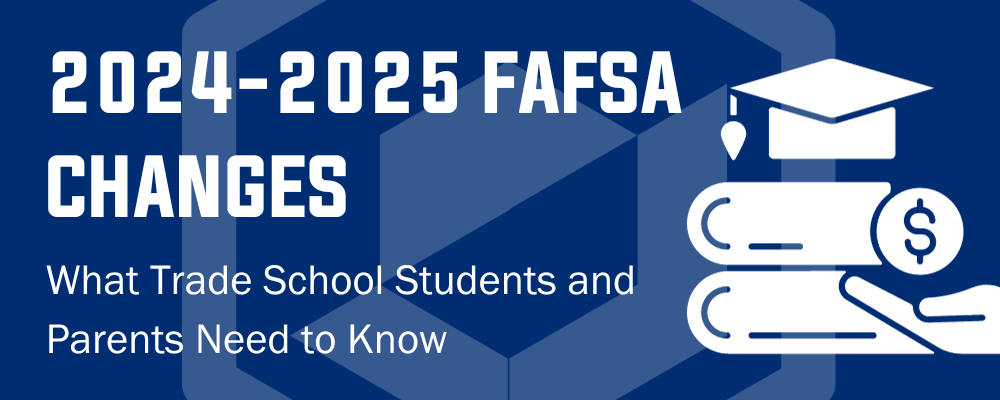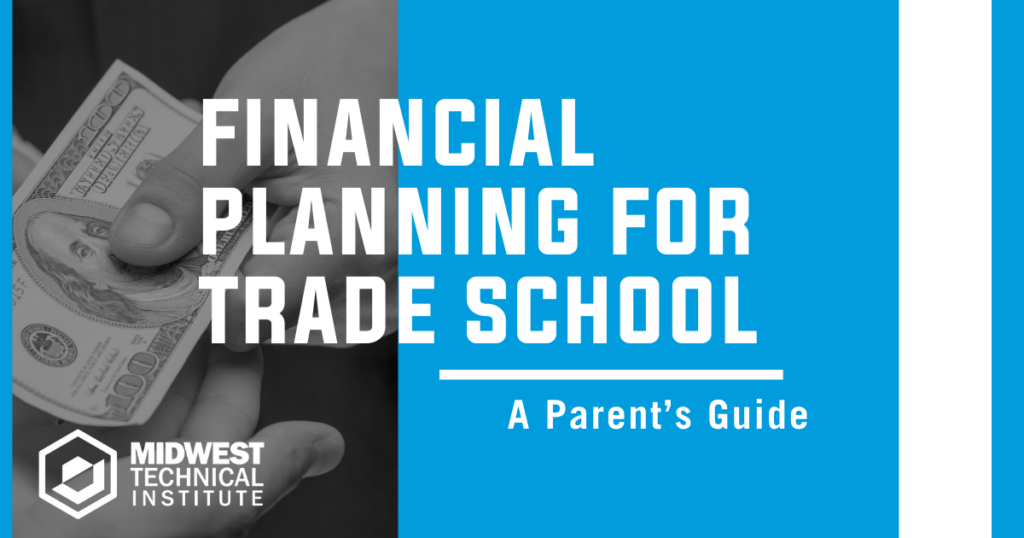Gen Z is on track to becoming the most educated generation yet. Members of this generation are less likely to drop out of high school and more likely to enroll in college than previous generations. However, college isn’t the only path available to high schoolers looking for a future career that can offer stability, fulfillment and high earning potential.
Trade school education can provide a faster route to beginning a career compared to two-year and four-year colleges. The U.S. is currently facing a massive shortage of skilled trade workers, creating openings in skilled trade jobs that can provide high-income opportunities with plenty of room for growth. Plus, trade school graduates enter the workforce well before their peers who enroll in two- and four-year higher education programs, meaning they’ll start earning sooner.
Training programs for even the highest-paying trade jobs typically come at significantly lower costs compared to earning a degree from a two-year or four-year college. In fact, trade school usually costs a fraction of the price of many university programs.
So, how do you know if a trade career is the right path for your high schooler? In this article, we’ll cover important factors to consider when choosing a path after high school and give you ideas on how to start the conversation with your high schooler.
How can you choose a trade career based on strengths & interests?
Your high schooler might not know their career goals yet, and that’s completely OK.
The first step is to help your high schooler figure out the sorts of tasks they enjoy. This can lead to them finding a career that feels fulfilling, versus a job that burns them out.
Aside from what they enjoy doing, it’s also important to consider learning style, lifestyle and preferred working environments. For example, do they want to sit behind a screen, or do they enjoy being outside and having flexible work hours? Considering these additional factors will help them choose a career that not only feels fulfilling but is sustainable in the long term.
There’s a variety of skilled trade jobs, and your goal as a parent is not to choose the best path for your high schooler, but to help guide them toward the best path based on their own goals and interests.
Let’s look at some ways to help your high schooler find a career that fits their interests and strengths.
- Get experience through summer jobs or volunteering. If they enjoy taking things apart and understanding the inner workings of technology or machines, maybe a part-time job at a mechanic or welding shop would spark interest in the mechanical trades as a career. Maybe your high schooler is particularly interested in the beauty industry and could work in a cosmetics store or hair salon. If they’re interested in health care, volunteering at a local nursing home or hospital could be a great way to get exposure.
- Take career aptitude surveys. These surveys are designed to help people assess their personal values, interests, skills and goals in order to explore how those attributes can translate to a professional career. Sometimes, it can inspire students who have no idea what type of career they want. Together, you can review the results and encourage your high schooler to explore related electives in high school, like anatomy, woodworking or even welding. In vocational-technical classes, students can experience the type of skills and tasks that will be needed in a specific profession before fully committing to a career path in the trades.
- Participate in job shadowing, workplace tours and informational interviews. These experiences take a little more commitment and research but can help students understand the day-to-day responsibilities of a specific role. Encourage your high schooler to reach out directly to local employers and workplaces and ask to be connected to a person in the role they’re interested in for an informational interview or job-shadow day.
- Explore career fairs or open houses. If your high schooler has a specific trade school in mind, campus tours are a great way to get a feel for the type of training they’ll get. This can help your high schooler make an informed decision about whether a career in the skilled trades is right for them. At Midwest Technical Institute (MTI), we host Explore Your Career Night several times a year. This on-campus event gives juniors and seniors hands-on experience in their program of interest, such as welding or dental assisting. They meet instructors and complete a hands-on exercise so they can get a feel for what it’s like to be a student at MTI.
- Try taking a learning-style quiz. Another important consideration when choosing the right career path is understanding the type of learner your high schooler is. If your high schooler is a kinesthetic learner – meaning they prefer to “do” something in order to learn it – instead of one who learns best by listening to a lecture or watching a demo, trade school could be an especially great choice.
Should your high schooler consider a skilled trade job instead of college?
Most of us have been told that college is the best (or only) path to a successful career. Trade school is often overlooked as a credible path to success, but that’s changing. There are many skilled trades that can offer a rewarding and fulfilling career path.
Start with the basics. Help them understand what differentiates a job from a career. Make sure they also understand what to expect at a trade school, including costs, programs and types of careers.
If your student is considering a two- or four-year college program, help them weigh the benefits of a trade school compared to longer academic programs. They should consider not only the costs, but also the time commitment.
So, is trade school the right choice for your high schooler? While it’s important to let your high schooler chart their own course, you can help guide them through the process.
Here’s some helpful questions you can ask your high schooler to consider when choosing a path after high school:
- Do you want to start working as soon as possible, or are you willing to spend two to four years (or more) in school?
- Do you want to only take classes focused on the skills you need to land a specific role, or are you willing to spend time on unrelated general education classes?
- Do you want to have less student loan debt than the average college graduate?
- Do you want to spend most of your time learning in a hands-on format versus a classroom or lecture hall?
- Do you prefer to work in an environment where you’ll connect with people, have flexibility and use your hands every day versus being behind a desk or computer?
If they answer “yes” to these questions, trade school could be right for your high schooler.
To learn more, check out The Ultimate Guide to Trade School for Parents.
Interested in Learning More About Parent Resources?
Fill out the form below to receive info about our career training programs.
What are the benefits of skilled trade jobs?
There are several distinctions between skilled trade jobs and other careers. In addition to high earning potential and steady demand, skilled trade jobs in general are more hands-on, dynamic and fast-paced.
Here are just a few of the benefits of starting a career in the skilled trades.
- The skilled trades offer thousands of high-earning job opportunities without a college degree. According to an NPR article released in February 2023, a shortage of workers in the skilled trades is pushing wages higher, while the financial return from a bachelor’s degree continues to soften.
- You can avoid overwhelming student loan debt. The average college graduate has three times as much student loan debt than the average MTI graduate.
- Instead of spending years earning a degree in college, you can complete your training in a fraction of the time. Many trade school programs can be completed in less than a year, meaning you’ll enter the workforce and start earning sooner than your classmates who decided to enroll in two-year or four-year programs.
- Skilled trade careers typically offer more flexible work schedules than traditional 9-to-5 jobs. Many industries offer the opportunity for travel, like welding and truck driving. Most truck drivers choose their own routes, depending on whether they want to travel interstate. Business ownership is also a possibility for HVAC/R technicians, cosmetologists and even truckers. Across the board, working in a skilled trade job most likely means you won’t be stuck behind a desk.
- Skilled trade workers make an impact. Welders and pipefitters play an integral role in rebuilding the infrastructure of our country. HVAC/R technicians keep our homes and businesses warm and cool. Dental assistants help people feel proud of their smile. Medical assistants help people live healthier lives. Cosmetologists help people look and feel their best. There are so many skilled trade careers that play a pivotal role in supporting communities and an active role in helping people.
Learning a skilled trade could give you higher earning potential, less student loan debt and more flexibility than a traditional 9 to 5. Plus, the skilled trades can also offer opportunities for flexibility, fulfillment and variety in your work.
What can you do to help your high schooler choose a skilled trade career?
As your high school student navigates the process of choosing between trade school and two- or four-year college, you can help to guide them.
Here’s a step-by-step recap of the process:
- Assess their strengths. Explore various tools that can help your student decide which career field might be a good choice based on their strengths and interests. Career aptitude surveys, learning-style quizzes, job shadowing and campus events are a great place to start.
- Ask the questions. Get your high schooler curious and considerate of their path after high school by asking the right questions and knowing what to expect in terms of cost, time commitment and training requirements.
- Choose a trade career. Once your student knows the careers they’re most interested in, research the outcomes, including employment data from reliable resources such as the Bureau of Labor Statistics. It’s important to weigh the factors of employment growth and earning potential against the investment in education.
- Take a step back and consider what they value most. Urge your student to look beyond the highest-paying trade jobs and consider employment potential, job duties, work environments and lifestyle factors. What do they find most appealing about a trade career? Do they value flexibility and hands-on work? Do they want to travel? Do they want to contribute to their community’s health and well-being?
Supporting your student in career exploration can be challenging, but it’s incredibly important to offer your support as they take this next step. Whether your high schooler decides to move forward with a trade school, like MTI, a two-year community college, a four-year university or something else entirely, trust that it’s the right place for your teen.
For more information, check out: Financial Planning for Trade School: A Parent’s Guide
Take the next step with MTI
MTI is here to help. The high school team is dedicated to offering support to juniors, seniors and their parents. We will connect you with a dedicated high school representative who will guide you and your high schooler from enrollment through graduation.
If you’re interested in learning more, you can fill out a form, and a member of the team will reach out with more information.
Helpful Links
- The Ultimate Guide to Trade School for Parents
- Financial Planning for Trade School: A Parent’s Guide
- What is a Trade School?
- Trade School vs. College: A Guide to Weighing Cost, Timelines & More
- High School Diploma vs. GED: What’s the Difference?
- High School Page
- Financial Aid Page
- Scholarships Page
- Tuition & Cost Page
- How Much Does Welding School Cost?
- How Much Does HVAC School Cost?
- How Can I Get My CDL in Missouri?
- How Can I Get My CDL in Illinois?
- How Long Does it Take to Become a Welder?
- How to Become a Medical Assistant in Illinois
Sources
https://www.forbes.com/advisor/education/what-is-a-skilled-trade/
https://www.collegiateparent.com/high-school/career-exploration-in-high-school/
https://www.themuse.com/advice/the-11-best-career-quizzes-to-help-you-find-your-dream-job
https://www.bls.gov/ooh/healthcare/medical-records-and-health-information-technicians.htm
https://www.bls.gov/oes/current/oes499021.htm
https://www.indeed.com/career-advice/career-development/how-to-write-smart-goals



